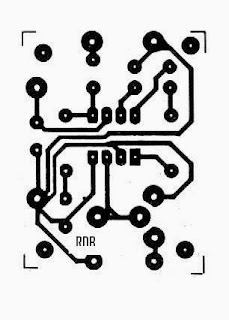High Quality, powerful unit: 90W into four Ohm load, conjointly suited as stringed instrument or bass electronic equipment
To celebrate the hundredth style announce to the current web site, Associate in Nursingd to fulfil the requests of the many correspondents wanting an electronic equipment a lot of powerful than the 25W MosFet, a sixty - 90W prime quality power electronic equipment style is conferred here. Circuit topology is concerning a similar of the on top of mentioned electronic equipment, however the very rugged IRFP240 and IRFP9240 MosFet devices square measure used because the output try, and well famed high voltage Motorola's transistors square measure utilized within the preceding stages.
The supply rails voltage was unbroken prudentially at the rather low price of + and - 40V. For those want to experiment, the provision rails voltage may well be raised to + and - 50V most, permitting the electronic equipment to approach the 100W into eight Ohm target: enjoy! an identical, separate elements, standard Preamplifier style is obtainable here: standard Audio Preamplifier.
Parts:R1______________47K 1/4W resistance
R2_______________4K7 1/4W resistance
R3______________22K 1/4W resistance
R4_______________1K 1/4W resistance
R5,R12,R13_____330R 1/4W Resistors
R6_______________1K5 1/4W resistance
R7______________15K 1/4W resistance
R8______________33K 1/4W resistance
R9_____________150K 1/4W resistance
R10____________500R 1/2W Trimmer Cermet
R11_____________39R 1/4W resistance
R14,R15_________R33 two.5W resistances
R16_____________10R two.5W Resistor
R17_____________R22 5W resistance (wirewound)
C1_____________470nF 63V Polyester electrical condenser
C2_____________470pF 63V styrene or ceramic electrical condenser
C3______________47µF 63V electrolytic
C4,C8,C9,C11___100nF 63V Polyester Capacitors
C5______________10pF 63V styrene or ceramic electrical condenser
C6_______________1µF 63V Polyester electrical condenser
C7,C10_________100µF 63V Electrolytic Capacitors
D1___________1N4002 100V 1A Diode
D2_____________5mm. Red LED
Q1,Q2,Q4_____MPSA43 200V 500mA NPN Transistors
Q3,Q5________BC546 65V 100mA NPN Transistors
Q6___________MJE340 200V 500mA NPN semiconductor
Q7___________MJE350 200V 500mA PNP semiconductor
Q8___________IRFP240 200V 20A N-Channel Hexfet semiconductor
Q9___________IRFP9240 200V 12A P-Channel Hexfet semiconductor
Power supply
Parts:
R1_______________3K9 1W resistance
C1,C2_________4700µF 63V Electrolytic Capacitors (See Notes)
C3,C4__________100nF 63V Polyester Capacitors
D1_____________400V 8A Diode bridge
D2_____________5mm. Red LED
F1,F2__________4A Fuses with sockets
T1_____________230V or 115V Primary, 30+30V Secondary 160VA Mains electrical device
PL1____________Male Mains plug
SW1____________SPST Mains switch
Notes:
within the original circuit, a three-diode string was wired serial to R10. 2 of those diodes ar currently replaced by a red light-emitting diode so as to realize improved quiescent current stability over a bigger temperature vary. due to David Edwards of LedeAudio for this suggestion.
A small, U-shaped heatsink should be fitted to Q6 & Q7.
Q8 & Q9 should be mounted on massive heatsinks.
Quiescent current is measured by means that of associate Avo-meter wired serial to the positive provide rail and no signaling.
Set the Trimmer R10 to its minimum resistance.
Power-on the electronic equipment and change R10 to browse a current drawing of regarding a hundred and twenty - 130mA.
Wait regarding quarter-hour, watch if the present is variable and readjust if necessary.
the worth instructed for C1 and C2 within the Power provide elements List is that the minimum needed for a mono electronic equipment. For optimum performance and in stereo configurations, this price ought to be increased: 10000µF may be a sensible compromise.
an accurate grounding is incredibly necessary to eliminate hum and ground loops. connect with identical purpose the bottom sides of R1, R3, C2, C3 and C4 and therefore the ground input wire. Connect R7 and C7 to C11 to output ground. Then connect singly the input and output grounds to the ability provide ground.
Technical data:
- sixty Watt RMS @ eight Ohm (1KHz sinewave) - 90W RMS @ four Ohm
Sensitivity:
- 1V RMS input for 58W output
- Total harmonic distortion @ 1KHz:
- 1W 0.003% 10W 0.006% 20W 0.01% 40W 0.013% 60W 0.018%
- Total harmonic distortion @10KHz:
- 1W 0.005% 10W 0.02% 20W 0.03% 40W 0.06% 60W 0.09%




















